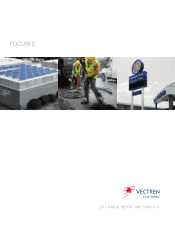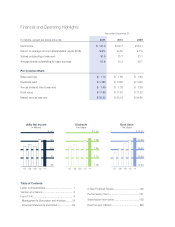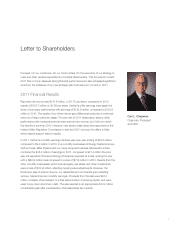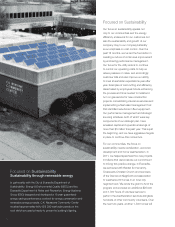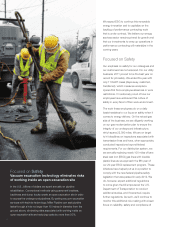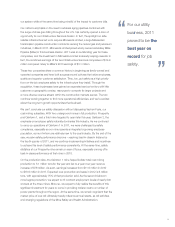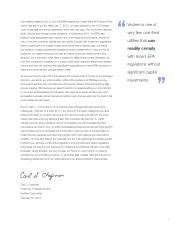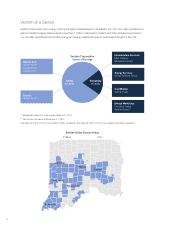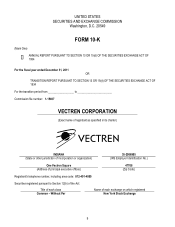Vectren 2011 Annual Report Download - page 5
Download and view the complete annual report
Please find page 5 of the 2011 Vectren annual report below. You can navigate through the pages in the report by either clicking on the pages listed below, or by using the keyword search tool below to find specific information within the annual report.
be weatherized in the greater Evansville area through our existing energy efficiency
program, Conservation Connection.
This same holistic approach to neighborhood revitalization began in Marion, Ind., in
2011. Our efforts to bring together a group of local stakeholders, including university
officials, economic development leaders and city administrators culminated in a
$240,000 state grant to weatherize dozens of homes in the inner-city area. While
the positive momentum will continue in these cities, we will strive to jumpstart similar
initiatives in other cities within our service territories, including Dayton, Ohio, and
Terre Haute, Ind. In fact, in Dayton, we have already built a strong foundation by
weatherizing more than 3,000 homes over the past five years through our ongoing
program, Project TEEM (Teaching Energy Efficiency Measures.) I am convinced that
our focus on community sustainability is essential; it brings a positive spark to our
communities that have been hardest hit by the recession and leaves a foundation in
place for further revitalization.
Building sustainable communities falls in line with our Conservation Connection
initiatives that have been very successful in helping residential and business
customers use energy wisely. On the gas side of the business, we continue to
exceed energy reduction goals in Indiana and Ohio and have helped customers
cumulatively save nearly 30 million therms of natural gas over the past five years,
which is enough to heat 37,000 homes for a year. In the summer of 2011, we
received Indiana regulatory approval to continue these programs for another four
years, including the decoupled rate design that enables us to fairly recover costs
while the focus on energy reduction continues. On the electric side, our energy
efficiency programs are also performing well, and we have regulatory approval
to recover costs associated with the programs and related lost margin. Closing
in on two years, the electric programs have helped customers save nearly 30
million kilowatt hours, which is enough to power more than 2,500 homes for a
year. In January 2012, we saw the launch of the statewide portfolio of electric
efficiency programs, Energizing Indiana, which offers additional programs that are
complementary to our portfolio. These collective energy efficiency efforts will help us
meet state electric usage reduction goals over the next decade.
On the nonutility side, our Energy Services sector, which includes Energy Systems
Group (ESG), focuses heavily on sustainability through energy efficiency performance
contracting and renewable energy project development. Earnings for the year were
solid at $6.7 million, compared to $6.4 million in 2010. Although earnings were
somewhat impacted by investing in human capital to grow performance contracting
operations over the long term, 2011 saw the beginning of several key renewable
energy projects. ESG broke ground on two customer landfill gas endeavors: one in
Georgia, which will harness landfill gas to power 70 county sanitation department
vehicles and the other for Munster, Ind., which will use landfill gas to power a 1.1
megawatt (MW) generator and then sell the electricity to their local utility. Another
initiative will see nearly 3 MW’s of power come online this spring thanks to ESG’s
efforts to partner with dairy farms in Wisconsin by constructing and owning three
anaerobic digesters, which will essentially convert the farms’ waste to energy.
Conservation Connection
Indiana reduction goals were
met before the fifth year of the
program began, while Ohio, now
two years into the program, is
outpacing annual goals as well.
Overall program savings far
outpaced five-year state targets.
Conservation Connection Savings
Indiana natural gas programs
4
3
2
1
Year
1 2 3 4 5
‘06-’07 ‘07-’08 ‘08-’09 ‘09-’10 ‘10-’11
Program Year
(December through November)
Gross therms saved (in millions)
Actual Program
Results
State Targets
3
2011 Annual Report.indd 5 3/2/2012 3:21:43 PM

